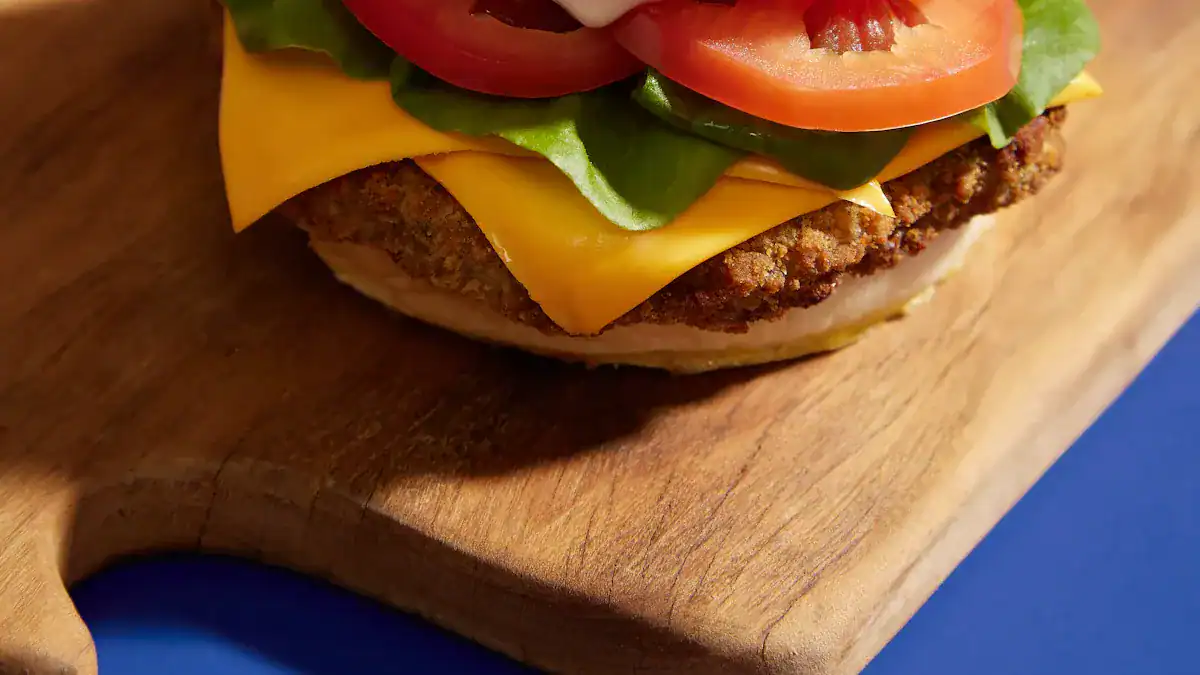
Esophageal dysphagia describes the sensation of food stuck in chest or feeling as if food is stuck after you swallow. This difficulty swallowing is common; about 16.1% of adults report it. Among these individuals, 40.6% have at least one disorder affecting their esophagus. While this feeling is often benign, certain instances of dysphagia demand urgent medical attention. This post helps you identify critical signs and symptoms. These signs indicate an emergency or a serious underlying condition in your esophagus. You must pay close attention to any problems swallowing, accompanying symptoms, and how long the sensation lasts.
Key Takeaways
- Food can feel stuck in your chest for different reasons. These include physical blocks, muscle problems, or swelling in your food pipe.
- Some common causes are large pieces of food getting stuck, narrow spots in your food pipe, or muscles not pushing food down well.
- You must seek urgent medical help if you cannot swallow your own spit, have bad chest pain, or feel like you are choking.
- Do not try to fix it yourself if food feels stuck and you have serious symptoms. Call 911 or go to the emergency room right away.
- Getting a quick diagnosis is important. It helps prevent serious health problems and ensures you get the right treatment.
Mechanical Obstructions: Food Stuck In Chest

You might feel food stuck in your chest due to a mechanical obstruction. This means something physically blocks your esophagus. These blockages prevent food from moving down properly.
Food Impaction
One common issue is food impaction. This happens when a large piece of food, often meat, completely blocks your esophagus. You feel this blockage in your chest. Structural problems or abnormalities of the esophagus often cause food impactions in adults. Eosinophilic esophagitis is a primary cause. It makes solid food stick intermittently. Historically, a Schatzki ring was a frequent cause. This ring caused food to get stuck early in a meal. Now, doctors rarely see it because many people use proton pump inhibitors.
Foreign Body
Sometimes, non-food items cause a similar sensation. This is a foreign body impaction. In adults, a food bolus is the most common type of foreign body you might ingest. However, true non-food foreign bodies are less common. You might accidentally swallow coins or dentures. Children often swallow coins, buttons, plastic items, or batteries. Disk batteries are especially dangerous. They can cause burns and perforations in the esophagus. Other non-food objects found in the esophagus include pieces of glass, dental prostheses, needles, and toothpicks.
Esophageal Stricture
An esophageal stricture is another mechanical problem. This means you have a narrowing of your esophagus. This narrowing can make you feel food stuck in chest. Chronic acid reflux, also known as GERD, is the most frequent cause. It accounts for up to 75% of these strictures. Stomach acid repeatedly flows back into your esophagus. This irritates the lining. It leads to chronic inflammation and scarring. This scarring creates a narrowed esophagus. Other types of long-term inflammation also cause strictures. These include pill esophagitis and infectious esophagitis. Pill esophagitis happens when certain medications damage the esophageal lining. Structural damage to the esophageal barrier is an initial mechanism. Mucosal ulcers can cause this damage. This leads to scar formation. Excessive tissue fibrosis is also strongly linked to esophageal strictures. These are the primary causes of this condition.
Urgent Dysphagia: Motility Disorders
Sometimes, the sensation of food stuck in chest comes from problems with how your esophagus muscles work. These are called motility disorders. They affect the coordinated movement that pushes food down.
Achalasia
Achalasia is a condition where your lower esophageal sphincter fails to relax. This causes food to back up into your esophagus. You might experience dysphagia and regurgitation, or food coming back up. This condition typically affects adults between 25 and 60 years of age. Less than 5% of cases occur in children. A retrospective study in the Netherlands showed an average annual incidence of achalasia in children of 0.1 per 100,000 individuals. The prevalence of achalasia increases as you get older.
Esophageal Spasm
Esophageal spasm involves uncoordinated contractions of your esophagus. These spasms can make you feel food stuck in chest. You might also have chest pain. Doctors diagnose this condition based on specific criteria. You must have at least 20% premature contractions in your manometric pattern. Your esophago-gastric junction relaxation must be normal. You also experience dysphagia or non-cardiac chest pain. Premature contraction definition requires measuring distal latency and identifying the contractile deceleration point (CDP). Multiple rapid swallows help identify a lack of inhibition.
Scleroderma Esophagus
Scleroderma esophagus is a condition where your esophageal muscles weaken. This leads to poor food movement. Scleroderma damages healthy esophageal smooth muscle tissue. It replaces this tissue with scar tissue. This scarring and weakening cause strictures, or narrowing, of your esophagus. You experience motility disturbance. Food and liquid travel more slowly. This causes difficulty swallowing and feelings of fullness. The sphincter muscle between your esophagus and stomach may not close fully. This leads to gastroesophageal reflux, or stomach acid backing up. You might feel food or stomach acid backing up. Esophageal inflammation and fibrosis are significantly mediated by Th17 cells. Increased levels of profibrotic endothelin-1 and proinflammatory cytokines are observed. The overproduction of extracellular matrix by interstitial fibroblasts contributes to fibrosis. Transforming growth factor (TGF)-β is a principal mediator of tissue fibrosis. Ultimately, esophageal smooth muscle atrophies. Fibrous tissue replaces it. This leads to severe motility disturbance in your distal esophagus. These are some of the causes of difficulty swallowing.
Acute Inflammatory Conditions

Sometimes, inflammation in your esophagus can cause the sensation of food stuck in your chest. These acute conditions often result in dysphagia and require prompt attention.
Severe Esophagitis
Severe esophagitis means inflammation damages your esophagus. You might experience dysphagia, a feeling of food getting stuck. Several factors are common causes. Severe acid reflux, also known as GERD, frequently leads to this condition. Infections, certain medications, or allergies, like Eosinophilic Esophagitis, also cause inflammation. This severe inflammation can also give you heartburn. You might also feel dysphagia due to the swelling, making eating difficult.
Esophageal Ulcers
Esophageal ulcers are open sores. They can cause swelling and obstruction in your esophagus. You might feel pain while swallowing. These ulcers often lead to dysphagia. Many causes contribute to esophageal ulcers. Gastrointestinal reflux disease (GERD) is a major factor, accounting for 65.9% of cases. Drug-induced ulcers are also common, making up 22.7%. You might also experience heartburn with these ulcers.

Other causes include candidal infections, caustic injury, and viral infections like Herpes Simplex Virus (HSV). This condition can make your dysphagia worse.
Caustic Ingestion
Caustic ingestion is an extremely urgent situation. You swallow corrosive substances, and they cause severe chemical burns to your esophagus. This damage can lead to immediate dysphagia. Airway and hemodynamic stabilization are crucial first steps. Doctors must evaluate you for immediate intubation or tracheostomy. This is because the corrosive substance can directly expose your upper respiratory tract. Intubation should happen with direct visualization. This avoids further injury. Doctors no longer recommend neutralizing agents. They can cause additional thermal injury. Routine nasogastric intubation is not warranted before endoscopic assessment. It might induce vomiting, leading to more esophageal exposure. This severe damage can also make you feel stomach acid backing up. You will certainly experience severe dysphagia with caustic ingestion.
When to Seek Emergency Care
You must recognize specific signs. These signs tell you when your difficulty swallowing is an emergency. Do not ignore these warnings.
Red Flag Symptoms
If you cannot swallow your own saliva, this is a serious sign of dysphagia. Severe chest pain also demands immediate attention. You might mistake this for a heart attack. However, it can be a severe symptom of acid reflux affecting your esophagus. Drooling or vomiting are also urgent indicators. If you feel like you are choking or cannot breathe, seek help right away. Shortness of breath with dysphagia is a critical symptom. A persistent sensation of food stuck in chest lasting more than a few minutes is also a red flag. If you experience regurgitation along with these symptoms, it adds to the urgency.
Consider these specific symptoms that indicate an esophageal emergency:
- Difficulty swallowing or discomfort when eating. You might feel like you are choking. This can mean damage to your esophagus from stomach acid.
- Sudden or sharp chest discomfort. This can be a severe symptom of acid reflux.
- Symptoms of shock. These include sudden weakness, dizziness, fainting, or confusion. These symptoms need immediate emergency room attention. They could come from severe acid reflux. They might also lead to neurological damage.
Immediate Medical Steps
If you experience any of these red flag symptoms, act quickly. Do not try to self-treat your dysphagia. Do not wait for the sensation to pass. Call emergency services immediately. In the US, this means dialing 911. You can also go to the nearest emergency room. Prompt action can prevent serious complications related to your esophagus.
Importance of Diagnosis
A quick and accurate diagnosis is very important. Doctors need to find the cause of your dysphagia. This prevents further problems. For example, aspiration can occur. This is when food or liquid enters your lungs. It can lead to serious infections. Perforation of your esophagus is another risk. This is a hole in your esophagus wall. It is a life-threatening condition. Prompt evaluation also stops underlying conditions from getting worse. Early diagnosis helps doctors start the right treatment for your dysphagia. This protects your health and well-being. Understanding the cause of your dysphagia is key to effective care.
Occasional minor discomfort is common, but persistent or severe sensations of food stuck in chest demand immediate medical evaluation. You must not self-diagnose. A professional medical assessment is crucial for accurate diagnosis and appropriate treatment. Do not delay seeking help if you experience any urgent signs discussed. These signs reinforce the potential for serious underlying causes.
FAQ
What is esophageal dysphagia?
You feel food stuck in your chest after swallowing. This sensation means food does not move down your esophagus easily. It is a common problem for many adults.
What causes food to get stuck in your chest?
Mechanical blockages like food impaction or strictures can cause this. Motility disorders, where your esophagus muscles do not work right, also cause it. Inflammation or ulcers can also make food stick.
What are red flag symptoms for food stuck in your chest?
You cannot swallow saliva. You have severe chest pain. You drool or vomit. You feel short of breath. The sensation lasts more than a few minutes. Seek emergency care immediately.
What should you do if food feels stuck in your chest?
You should not try to force the food down. Do not wait for the feeling to pass if you have red flag symptoms. Call emergency services or go to the nearest emergency room right away.
What is the importance of a quick diagnosis?
A quick diagnosis prevents serious problems. It stops food from entering your lungs. It also prevents a hole in your esophagus. Early diagnosis helps doctors start the right treatment for you.




